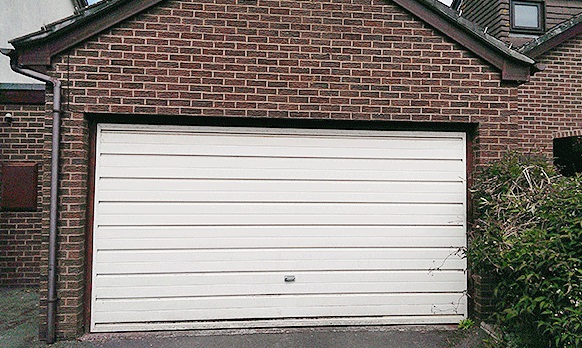How to build a garage
To help develop this article, click 'Edit this article' above.
A garage is a common type of single-storey building, typically constructed to adjoin an existing building, and used for keeping vehicles, as storage space, and so on. The method of connection requires careful consideration, in particular, openings between the extension and the existing building (if there are any), junctions with the existing roof structure, the positions of existing flues, drains, and so on.
A garage can also be constructed as an independent structure which is not adjoined to the main building, or it can be incorporated within the main building.
Building Regulations approval is required for building a garage but planning permission may not be in all instances – the local authority should be able to advise as to whether it planning permission is needed or not. As an outbuilding, a garage may be considered a permitted development which will not require planning permission as long as:
- It is not forward of the wall forming the principal elevation.
- It is single-storey with a maximum eaves height of 2.5 m, and maximum overall height of 4 m with a dual-pitched roof, or 3 m for any other roof.
- It has a maximum height of 2.5 m within 2 m of a boundary.
The first stage of building a garage is to develop a design which lays out the dimensions and features in detail. An important consideration is where side access from the main building will be and whether a section of the existing wall will be able to be taken out to allow for the installation of a door. It is also important to establish how vehicles will access the garage, turn and so on.
It will be important, if the garage is to be used for storing a vehicle, that the correct size is ascertained, bearing in mind door opening radii. Typical sizes are 3.5 x 6 m for a single garage, and 6.5 x 6.5 m for a double garage (for two vehicles). The height of the door opening is also an important consideration.
Before beginning construction, the ground must be levelled and the firmness assessed. Hardcore can be used to level and firm up soft ground. Services will also need to be provided for power, drainage and sometimes a water supply.
Some of the topsoil will generally be removed, typically around 6 inches, so that the concrete slab will be level with the surrounding ground. A layer of firm tamped sand should be provided as support for the concrete which will be poured on top. It can be advisable to install a damp-proof membrane if the ground is prone to damp. This should be added to the whole base and also between the concrete and the adjacent wall to avoid damp transfer.
Structural rebar can be installed to reinforce the concrete slab if required, and then the concrete poured and left to cure.
When the foundation has set the walls can be constructed and then the roof built, typically using joists and rafters. Garage roofs are most commonly pitched or flat.
The garage then needs to be wired with electricity and lighting provision, insulated, installed with drywall (if required), and then painted (if required).
The final step is to install the garage door, which can be made of timber, steel or fibreglass. Many are fitted with a remote-control system which automatically raises and closes the door.
[edit] Related articles on Designing Buildings Wiki
- Basements in buildings.
- Building an extension.
- Carport.
- Conservatory.
- External doors.
- Hiring an architect as a domestic client.
- How to build a porch.
- How to find a builder.
- How to lay block paving.
- Incorporating a concrete garage into the landscape
- Loft conversion.
- Outbuildings.
- Permitted development.
- Planning permission.
- Renovation.
- Self-build homes.
Featured articles and news
The UK's Modern Industrial Strategy: A 10 year plan
Previous consultation criticism, current key elements and general support with some persisting reservations.
Building Safety Regulator reforms
New roles, new staff and a new fast track service pave the way for a single construction regulator.
Architectural Technologist CPDs and Communications
CIAT CPD… and how you can do it!
Cooling centres and cool spaces
Managing extreme heat in cities by directing the public to places for heat stress relief and water sources.
Winter gardens: A brief history and warm variations
Extending the season with glass in different forms and terms.
Restoring Great Yarmouth's Winter Gardens
Transforming one of the least sustainable constructions imaginable.
Construction Skills Mission Board launch sector drive
Newly formed government and industry collaboration set strategy for recruiting an additional 100,000 construction workers a year.
New Architects Code comes into effect in September 2025
ARB Architects Code of Conduct and Practice available with ongoing consultation regarding guidance.
Welsh Skills Body (Medr) launches ambitious plan
The new skills body brings together funding and regulation of tertiary education and research for the devolved nation.
Paul Gandy FCIOB announced as next CIOB President
Former Tilbury Douglas CEO takes helm.
UK Infrastructure: A 10 Year Strategy. In brief with reactions
With the National Infrastructure and Service Transformation Authority (NISTA).
Ebenezer Howard: inventor of the garden city. Book review.
The Grenfell Tower fire, eight years on
A time to pause and reflect as Dubai tower block fire reported just before anniversary.
Airtightness Topic Guide BSRIA TG 27/2025
Explaining the basics of airtightness, what it is, why it's important, when it's required and how it's carried out.
Construction contract awards hit lowest point of 2025
Plummeting for second consecutive month, intensifying concerns for housing and infrastructure goals.
Understanding Mental Health in the Built Environment 2025
Examining the state of mental health in construction, shedding light on levels of stress, anxiety and depression.






















